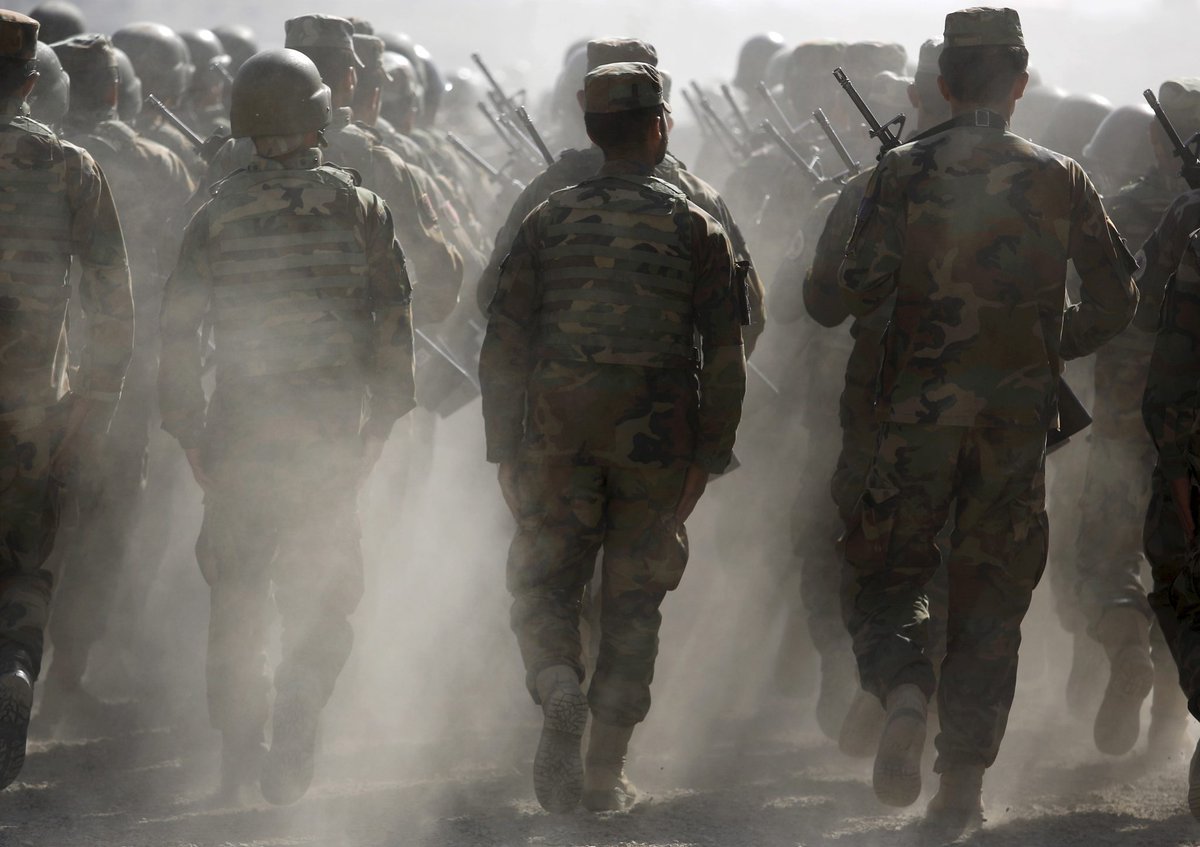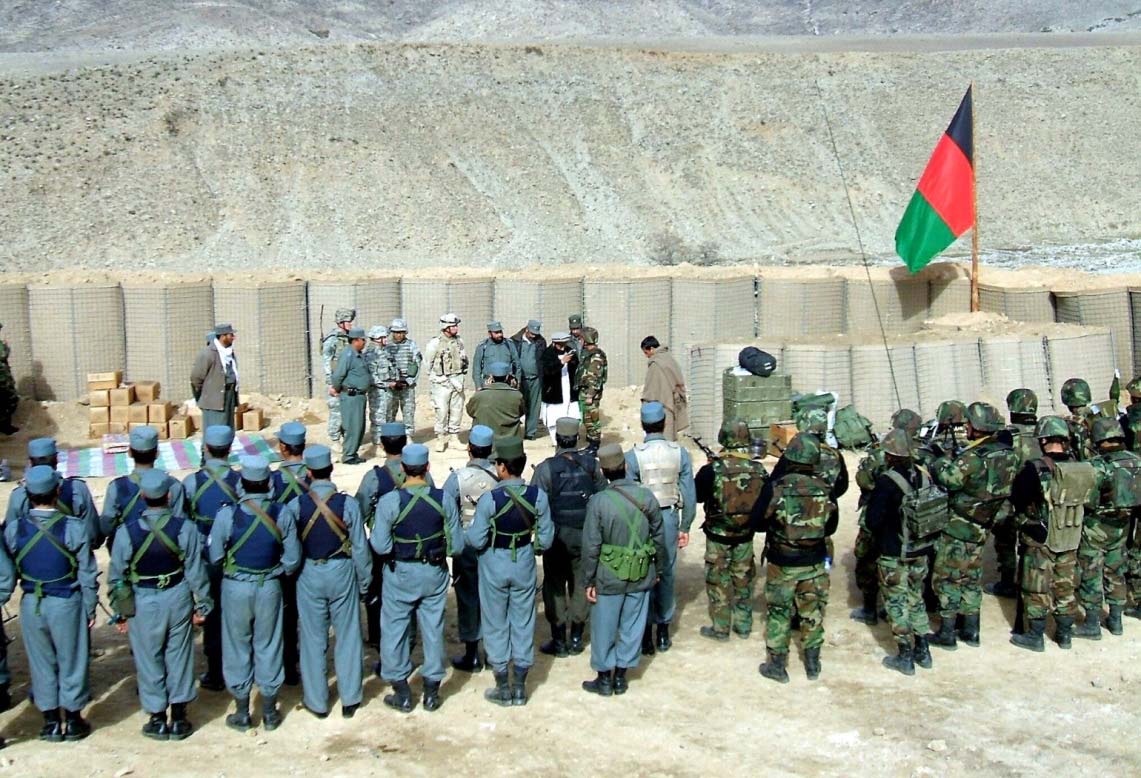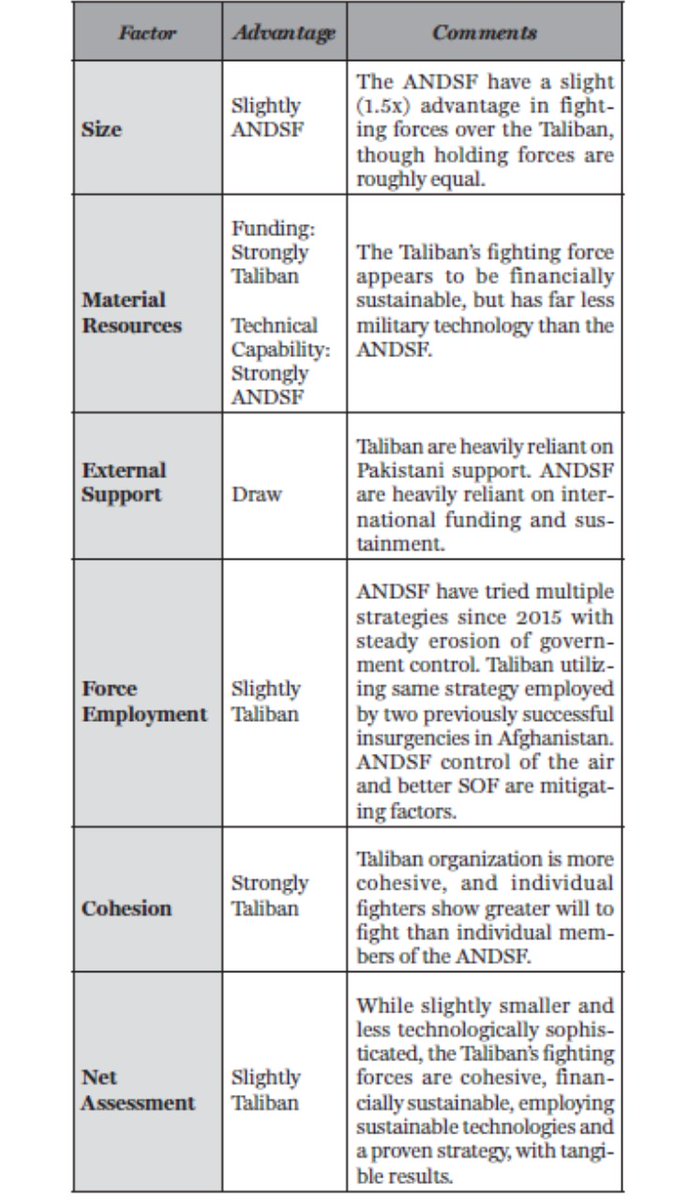Yesterday, I had the great honor of publishing a net assessment of #Afghanistan's security forces & the #Taliban's fighting forces in @CTCWP's Sentinel. In this THREAD, I'll summarize my analysis. 1/n
https://ctc.usma.edu/wp-content/uploads/2021/01/CTC-SENTINEL-012021.pdf
https://ctc.usma.edu/wp-content/uploads/2021/01/CTC-SENTINEL-012021.pdf
The article was inspired by this paper by @SethGJones. In it, Jones asserts that "w/o a peace deal, the further withdrawal of US forces…will likely shift the balance of power in favor of the #Taliban...who would eventually overthrow the Afghan gov't" 2/n https://www.ctc.usma.edu/afghanistans-future-emirate-the-taliban-and-the-struggle-for-afghanistan/
This is a critically important judgment for the future of US
policy on #Afghanistan, but a formal, public assessment of how AFG's security forces (the #ANDSF) compare to the #Taliban’s fighting forces in the context of US troop withdrawals doesn't exist. 3/n
policy on #Afghanistan, but a formal, public assessment of how AFG's security forces (the #ANDSF) compare to the #Taliban’s fighting forces in the context of US troop withdrawals doesn't exist. 3/n
So, I set out to answer the Q: If the US withdraws the remainder of its forces from #Afghanistan, would the ANDSF or the #Taliban be stronger militarily? 4/n
Note I assume that the US withdraws the rest of its troops by May 1, 2021 (per the US- #Taliban agreement) or within a single 6-month extension as I and others (incl @BRRubin & @VFelbabBrown) have argued may be possible. 5/n https://responsiblestatecraft.org/2021/01/11/biden-can-bring-troops-home-from-afghanistan-the-right-way/
To answer this Q, I conduct a net assessment of the two sides' forces across five factors: size, material resources (funding & technology), force employment, external support & cohesion. If you're not familiar with net assessment, here's a good primer. 6/n https://press.armywarcollege.edu/parameters/vol36/iss1/1/
The first four factors address the basics of military effectiveness: people, things, & the ability of people to use those things. Cohesion addresses will to fight & is important in the context of ongoing peace talks. 7/n
Size: The best public estimate of #Taliban size came from @AntonioGiustoz2 in 2017. He estimated TB fighting forces at ~60,000 + ~90,000 militia forces + tens of thousands more informal support forces. 8/n https://www.refworld.org/docid/5b0689e44.html
#ANDSF size we know pretty accurately as a result of a new biometric manpower system in #Afghanistan. As of mid-last year (most recent report), total size was 288,702 individuals. Doing some add'l math + assumptions, end w/~96,000 on-hand soldiers + ~83,000 on-hand police. 9/n
Resources: Very unclear how much $$ the #Taliban make each year--there are estimates of this but some great exchanges w/ @mansfieldintinc convinced me they're unreliable. More important point is how diversified the TB funding portfolio has become--lots of discrete $ sources. 10/n
The #ANDSF cost $5-6B per year, w/75% of that coming from the US (& only ~$400-500M coming from the Afghan govt). The Afghan Air Force + #SOF account for ~$2B of that total. 11/n
In terms of technology, the #ANDSF are far more technically equipped than the #Taliban's fighting forces, especially when it comes to airpower, protected mobility & western-style weapons. Though the #Taliban have gained access to the latter two via ANDSF checkpoint overruns. 12/n
External spt: #Taliban heavily rely on sanctuaries in #Pakistan & ISI support, as everyone knows & a former ISI DG openly admitted. They also get spt from #alQaeda, #Russia, #Iran & Gulf States. #ANDSF are almost totally reliant on external $$. 13/n https://www.khaama.com/former-dg-isi-reveals-secrete-links-with-taliban-896876/
Force employment: #Taliban have been using the "outside-in" strategy we @CNA_org described in our first #ANDSF assessment, supported by guerilla, conventional & terrorist tactics, intel activities, intimidation, info ops & criminal activities. 14/n
https://www.cna.org/cna_files/pdf/DRM-2014-U-006816-Final.pdf
https://www.cna.org/cna_files/pdf/DRM-2014-U-006816-Final.pdf
The #ANDSF had been using a "ring of steel" around cities + Corps/Div-level clearing ops in the wake of the US surge, until @Commander_RS moved ~2018 to a military pressure model that leads with #SOF & AAF. ANA/ANP now mostly stand on checkpoints. 15/n https://warontherocks.com/2019/05/military-pressure-and-body-counts-in-afghanistan/
Cohesion: Here I apply @CastilloJasen's model of military cohesion. Application of it identifies the #Taliban forces as a "messianic military" (strong cohesion) & the #ANDSF as an "apathetic military" (not so much). 16/n https://www.amazon.com/Endurance-War-National-Military-Cohesion-ebook/dp/B00LCV0A38
(The #Taliban cohesion conclusion is supported by the excellent work of @and_huh_what for @USIP using other methods.) 17/n https://www.usip.org/publications/2020/03/taliban-fragmentation-fact-fiction-and-future
Net Assessment (summarized in this table):
Size: Contrary to popular belief, the #ANDSF don't outnumber the #Taliban by that much. Holding forces are about equal, #ANDSF fighting force is about 1.5x of the TB. Slight advantage to the ANDSF here. 18/n
Size: Contrary to popular belief, the #ANDSF don't outnumber the #Taliban by that much. Holding forces are about equal, #ANDSF fighting force is about 1.5x of the TB. Slight advantage to the ANDSF here. 18/n
Material resources: #Taliban funding model is far more sustainable than the #ANDSF. Strong advantage to the TB.
#ANDSF technological prowess far exceeds that of the TB; air power + #SOF being an especially powerful combo. Strong advantage to the ANDSF. 19/n
#ANDSF technological prowess far exceeds that of the TB; air power + #SOF being an especially powerful combo. Strong advantage to the ANDSF. 19/n
Ext spt: Both sides heavily reliant on some form of external support ( #Taliban = #Pakistan; #ANDSF = US). Draw.
Force employment: #Taliban have a better military strategy, though combo of AAF + #SOF mitigate the disparities somewhat. Slight advantage to the TB. 20/n
Force employment: #Taliban have a better military strategy, though combo of AAF + #SOF mitigate the disparities somewhat. Slight advantage to the TB. 20/n
Cohesion: Strong advantage to the #Taliban.
Overall net assessment: If the US were to withdraw the rest of its forces, the TB would have an immediate slight military advantage that would compound over time. 21/n
Overall net assessment: If the US were to withdraw the rest of its forces, the TB would have an immediate slight military advantage that would compound over time. 21/n
Why compounding? Degradations in things like helicopters (e.g., overuse, maintenance failures, cannibalization) that are likely in the absence of advisors will be nonlinear/accelerating. Plus the #ANDSF lack "staying power" as defined in @CastilloJasen's theory. 22/n
What might be done about this? I offer two suggestions.
1. Focus on #ANDSF recruitment. The force is short 63k people relative to authorized end-strength--a hole the size of the entire #Taliban fighting force. 23/n
1. Focus on #ANDSF recruitment. The force is short 63k people relative to authorized end-strength--a hole the size of the entire #Taliban fighting force. 23/n
2. Ruthlessly simplify the force. The best thing the US could do between now & its departure is to focus entirely on improving sustainability of the #ANDSF. This will require both force structure & force employment changes, as I've previously argued. 24/n https://www.lawfareblog.com/afghanistan-will-be-biden-administrations-first-foreign-policy-crisis
The bottom line is the US has built an #ANDSF that has massive technological overmatch on the #Taliban but is almost entirely unsustainable & still in search of a viable military strategy. TB meanwhile have a less snazzy but largely sustainable force & a proven strategy. 25/n
That bodes very ill for #Afghanistan's govt in the absence of US troops. My last suggestion (which I know is tough!) is for the govt to aggressively pursue negotiations & not tempt the #Taliban to exploit the military advantage it will have when the US inevitably departs. 26/26
PS. Mad props to @and_huh_what @mansfieldintinc @CruickshankPaul & several of my @CNA_org colleagues (not on twitter) for their help with various parts of the document. It's waaaaaay better for your contributions.

 Read on Twitter
Read on Twitter




